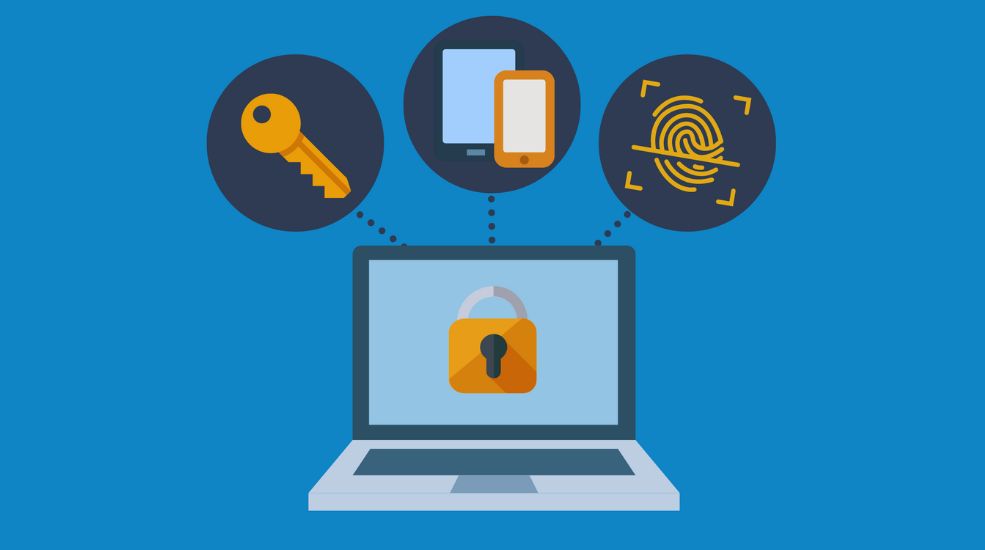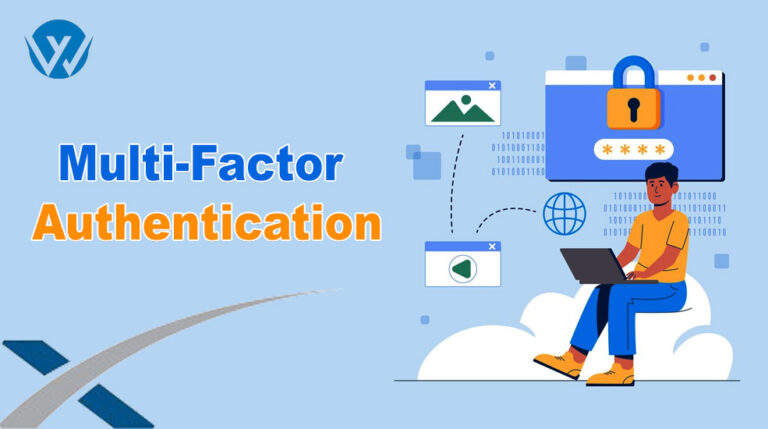Cyber security has become the primary concern as technology expands. We rely on the internet and networks to connect to the servers. There was a need to develop more strong security measures to protect the data, systems, and networks from cyber-attacks. Nowadays, multi-factor authentication protects systems and networks from rising cyber threats.
MFA is based on three factors: Something you know (Your password or pin), something you have (Your device or any digital token), and something you are (Biometric, facial recognition, or IRIS). MFA is of two types, location-based MFA and adaptive MFA (Risk-based MFA), and both are used according to the model and requirement of digital space.
Understanding Multi-Factor Authentication:
Multi-factor authentication is also known as MFA. It is a security protocol based on multiple layers of identification to access the system or online account. This has extra layers of protection as compared to traditional single password protection. It enhances security and reduces the risks of unauthorized access to your accounts and data.
Common Authentication Factors:
MFA is based on three factors: Something you know, i.e. password. Anything you are, i.e. biometric data, and something you have, i.e., a mobile device or any physical token.
Something You Know:
Something you know refers to your traditional password or PIN. It is the primary protection layer, but more than a single password is needed nowadays. However, making more robust security layers is more effective as a part of MFA.
Something You Have:
Something you have refers to an electronic device, i.e., a mobile or physical token you possess. It is the second MFA factor used as a layer of authentication. Your device is used to authenticate the access and credentials.
Something You Are:
Something you are involved in is authentication through biometrics, facial recognition, or IRIS. The last factor of MFA makes the process more authentic and secure. It is a high-safety and advanced way of authentication that makes the process more secure.
Other Types of Multi-Factor Authentication:
MFA is based on the integration of machine learning and artificial intelligence. It makes authentication more robust and more sophisticated than traditional authentication methods. Other MFA types are stated below:
Location Bases MFA:
Location-based MFA works to authenticate access through sole verification of IP address or geo-location combination. This information matches the live location information with the stored location in the database. It is used as the primary authentication layer or an additional authentication layer. If live location data mismatches with the data of the location stored in the database, the authentication is denied. It ensures authorized access to main servers through remote locations.
Adaptive Authentication/ Risk-Based Authentication:
Another type of MFA is Adaptive Authentication. It is also known as Risk-based Authentication. Adaptive authentication involves the analysis of other factors like context and user behaviour. This authentication process uses these values or factors to measure the risk level involved when a login attempt is made. This process works in the following way:
- Where the user is located and when he is trying to get access to the system or information.
- When you are trying to get access to the company database? Are you accessing it during regular working hours or ‘’off hours’’?
- What device are you using? Is it the same as the one you used earlier or a new one?
- What is the type of network? Either private or public?
For the Calculation of Risk Level, These Factors are Analyzed and can be Used to Decide the Following:
- Allow smooth access risk factor is low.
- Add an authentication factor to allow access. If the risk factor is medium,
- Block the access if the risk factor is high.
That is why this type of MFA is also known as risk-based authentication.
Benefits of Multi-Factor Authentication:

Enhanced Security Protocol:
As technology improves, we depend on the Internet to perform routine tasks. Subsequently, cyber security threats are also increasing, and there are more chances of cyber-attacks and breaches of conventional security protocols. However, according to internet and network security experts, multi-factor authentication enhances the security protocols and improves the control over access authorization to the systems and networks.
Adding MFA enhances the overall security of systems and networks and helps us build a safer digital environment.
Compliance with Security Regulation:
Implementing the MFA security protocol is essential to complying with modern security regulations and international data protection standards. Multiple laws like HIPPA and PCI DSS are exercised and based on MFA to protect customers’ data. Implementing MFA helps organisations comply with these laws and avoid fines and penalties.
Reduced Workload of Security Experts:
MFA enables security experts to build robust verification and authentication protocols. Systems designed on multi-factor authentication can block unauthorized access on their own. It allows the security teams to focus on other important tasks instead of checking and validating users’ access to networks and systems. It improves the overall productivity of the team and organization.
Secured Remote Working with MFA:
Companies are moving to remote workstations and online working as the working environment evolves. This business setup is more vulnerable to cyber security threats. MFA enables organizations to secure the systems and networks from these cyber security threats. Adaptive authentication is most effective for ensuring a remote working environment.
Easy and Smooth Implementation:
The implementation of MFA is fundamental and smooth. It does not require additional expertise. Security experts may quickly develop and implement the MFA strategy without affecting the organization’s digital space. Implementing and integrating MFA is cost-efficient and has excellent security protocols and benefits.
The Final Verdict
In the modern days of technology and prevailing cyber security threats, traditional security measures are not sufficient to protect data and information. You need advanced solutions to protect the advanced security challenges and enhance cyber security. Multi-factor authentication is the most effective solution to safeguard systems and networks from unauthorized access. IT and current ecosystem companies use MFA security protocol.
MFA improves security and remote working, and it’s straightforward to deploy.It also meets international security norms like HIPPA and PCI DSS. Data privacy, systems, and networks depend on MFA. This technology secures the digital world for consumers.

